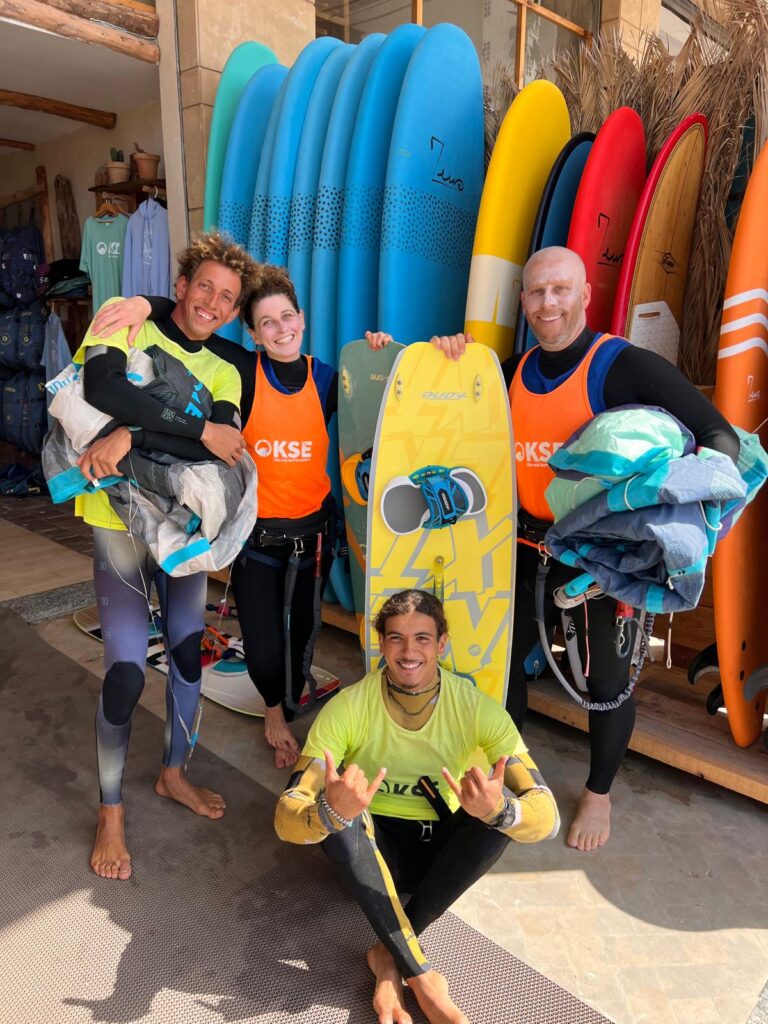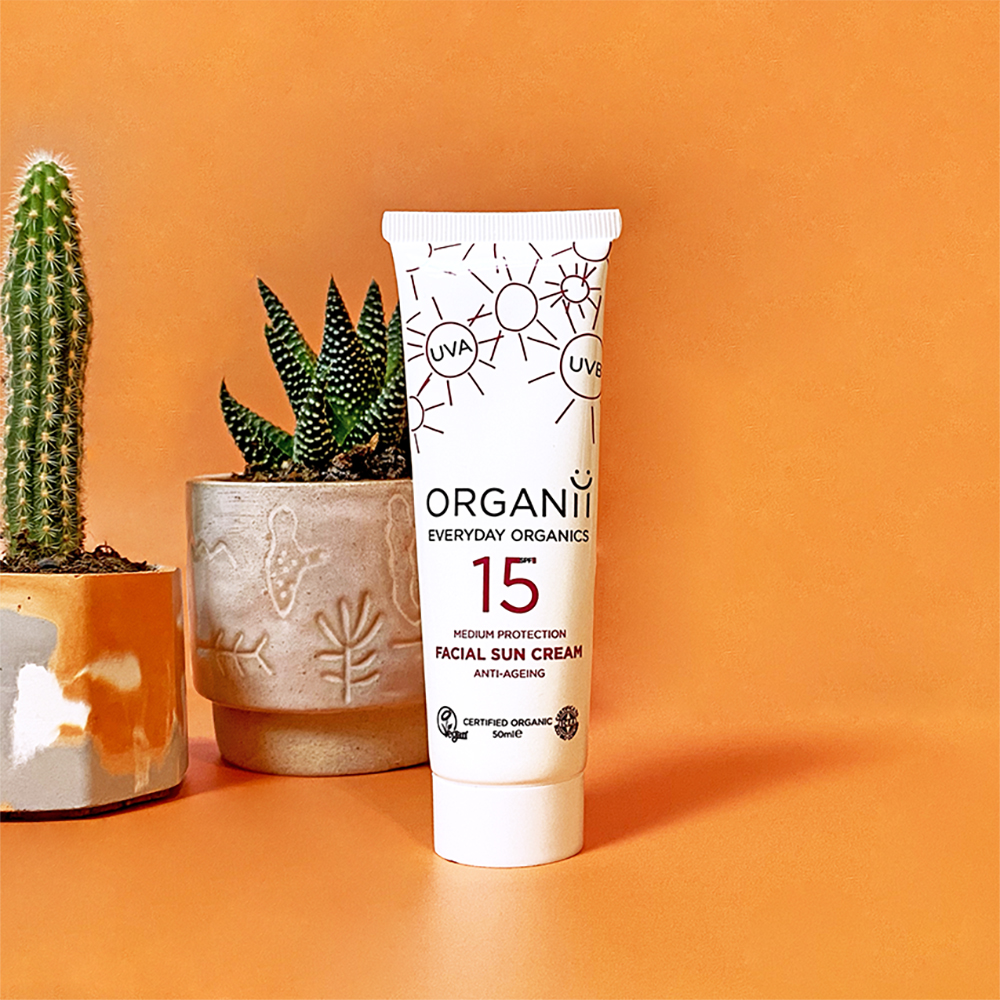Do you know the difference between mineral sunscreen and chemical sunscreen? It’s pretty important. Choosing the right sunscreen is better for your health. It can also have a big impact on the environment, and ocean life, especially.
At least 100,000 new cases of skin cancer are now diagnosed each year, according to the British Skin Foundation. As such, sunscreen is essential protection from overexposure to the UV rays. Plus, sunscreen with UVA protection also provides protection against premature ageing (more on this below), which we wouldn’t say no to, either.
Here’s what you need to know…

What is a mineral sunscreen?
A mineral sunscreen works by reflecting UV rays away from the skin. They are made of natural ingredients that have been processed in a lab: zinc oxide (from the mineral zincite) and titanium dioxide (from minerals rutile or anatase, if natural).
Why do they take longer to rub into the skin, you ask? Or maybe you didn’t know that yet, so we asked. It’s a tough life laying on the beach, rubbing in sun cream…
Well, it’s because both ingredients are very white ‒ they’re reflecting the sun, remember. Then there’s the fact that they work on the surface of the skin, so your body doesn’t absorb the cream (or as much heat from the sun). In our humble opinion, both these things make rubbing in that whiteness worth the extra effort.
As it contains less chemicals, mineral sunscreen is also broadly considered to be less irritating for sensitive skin.
An important note: Mineral sunscreens are not to be confused with ‘mineral oil’, which is actually a heavily processed form of petrol and therefore to be avoided.

Where you can source mineral sunscreen
Two brands we’ve recently tried and tested ourselves are Shade all natural sunscreen an Organii organic sun care. We took them to Morocco and to try them in pretty tough conditions, while kitesurf in the sea and staying in the desert. You can read our review here.
What is a chemical sunscreen?
Rather than reflect the UV rays, chemical sun creams are absorbed into the skin creating a chemical reaction in the body that then releases them as heat.
They can be invisible to spray on and quickly absorbed into the skin. Dreamy. But, at what cost?
Chemical sunscreens contain chemicals that are definitely absorbed into the body and possibly have adverse effects. They are also harmful to the environment, especially when they are washed off into the sea. This section could contain a whole list of ingredients to avoid, but have you ever read an ingredients list on any cosmetic product? Even we find it confusing.
How do you know what’s a ‘chemical’ sunscreen?
It’s on every shelf of every supermarket and airport shop, and probably one you’ve been using for years. Be aware – even chemical sunscreens can market their products as “mineral protection”, so you’re best to look for a certified natural or organic product, or a recommendation from a site you trust, if you want a genuine mineral sunscreen.
What about ‘nano particles’ in sunscreen – are these bad?
Nano-particle technology breaks ingredients down into tiny particles. This is what allows sunscreen to be rubbed in more easily and not leave such a white sheen on your skin.
Nano-particles are still a bit of an unknown and some fear this allows the chemicals to cross cell membranes, which means they could be absorbed into the body. Other research suggests they don’t carry much of a risk.
It can be used in mineral sunscreen, too. If you want to stay away from nanoparticles, Ethical Consumer lists brands that use explicitly non-nano zinc oxide or titanium dioxide.
Is SPF 25 high enough?
What factor SPF to use is a great question, with an even better answer. Are you ready to have your mind blown?
The SPF (Sun Protection Factor) rates how good a sunscreen is at blocking UVB rays – the ones that most typically cause sunburn. A product with SPF 15 blocks a staggering 92% of UVB rays. SPF 20 blocks about 95% and SPF 50 blocks about 98%.
So, there’s a 6% difference between SPF 15 and SPF 50. And, yes, SPF 25 is probably high enough.
Not linked to the SPF rating, but also important to note:
UVA rays account for 95% of the radiation that reaches the earth’s surface. They have a longer wavelength that can pass through clouds and glass. It’s mainly linked to ageing but can also cause cancer. So, look for a sunscreen that protects you from both UVA and UVB rays.
And finally a fun fact (for any quiz knowledge you might need to accumulate):
The sun emits a third type of radiation – UVC. These are the most damaging rays, but they are completely filtered by the atmosphere and don’t reach the earth’s surface. So, you don’t need to worry about them.

How much time can you spend in the sun without burning?
There’s a calculation you can use as a guide for how much time is safe for your skin to spend in the sun: your skin’s own natural protection time (typically 5 – 30 minutes) x sun protection factor.
But, we don’t encourage you to play fast and loose with working out the limits of your skin’s own protection time because there are other variables – most notably the weather and atmospheric conditions.
So, the best way to stay safe in the sun is simply not to stay in it for too long.
Is ‘reef-safe’ mineral sunscreen genuinely safe for reefs?
Another great question, with another unexpected answer.
Sun creams are increasingly labelled ‘Reef-safe’, ‘Reef-friendly’ or ‘Ocean-friendly’.
This is largely because they don’t contain chemicals such as Oxybenzone, which is said to act as hormone disruptors and cause sex change in fish, reduce their growth or egg output and destroy coral reefs around the globe. Researchers found a single drop in 4.3 million gallons of water — about six and a half Olympic-size swimming pools — is enough to be deadly to coral.
“However, it’s not as simple as switching to mineral sunscreens,” warns Graeme Hume, from Organii. “Mineral sunscreen can wash off more easily in the sea because it sits on top of the skin. Plus, although more natural, Zinc Oxide may also have a bleaching effect on the coral and Titanium Dioxide could also negatively impact marine life. As with most things, the best answer is to use less sun cream, which means staying out of the sun more.”
Also, it’s important to put this into context. By far, the greatest damage to coral reefs is rising water temperatures caused by the climate crisis.
So, err, about that flight you took to get to that holiday where you need to apply sun cream…
Microplastics in sunscreen:
Forget the packaging for a moment, did you know that upwards of 72% of sun creams also contain microbeads, according to research conducted by the Plastic Soup Foundation?
7 countries that banned chemical sunscreens in 2021:
1. Hawaii
2. US Virgin Islands
3. Key West, Florida
4. Ecotourism reserves in Mexico
5. Bonaire (Caribbean)
6. Aruba (Carribbean)
7. Palau (an island country in the western Pacific)
Source: CNTraveler
Nope, microplastics weren’t banned in sunscreen in 2018, because it’s considered a ‘leave-on’ cosmetic product and the microplastic ban is limited to ‘rinse off’ products.
So, microplastics can be used to bind ingredients together or make a product waterproof – and there can be between 10 and 100 trillion particles in one single product. The Plastic Soup Foundation claims that the very smallest particles are potentially the most dangerous because they can be absorbed into the food chain so easily – they can even be absorbed by animal tissue… You are what you eat, as the saying goes.
Once again, ingredients lists are not your friend, here. Microplastics are hidden in all types of ingredients, the list could be as long as this article. Probably better to look for a sunscreen that doesn’t contain synthetic ingredients (i.e. a mineral sunscreen).
Greenwashing in sun cream, what to look out for:
When it comes to effective and sustainable sun cream, looking for a certification from the likes of organic certifying bodies such as the Soil Association, Cosmos or Natrue is a much quicker route to choosing a safe sun cream. This is because to be certified, brands are not allowed to use the most toxic chemicals.
The Soil Association doesn’t allow testing on animals.
If you’re looking for a vegan sunscreen, look for the Leaping Bunny logo. If this isn’t present the common animal-derived ingredients to look out for are keratin and lanolin (also honey and beeswax, but there’s no animal cruelty involved).
Finally, Ethical Consumer have a very comprehensive sunscreen buying guide, where they score and rank the ethical and environmental credentials of 32 sunscreen brands. Spoiler: Shade and Organii rank highly. Boots and Superdrug own brands come out bottom.
Main image: Photo from Pexels by RF._.studio





